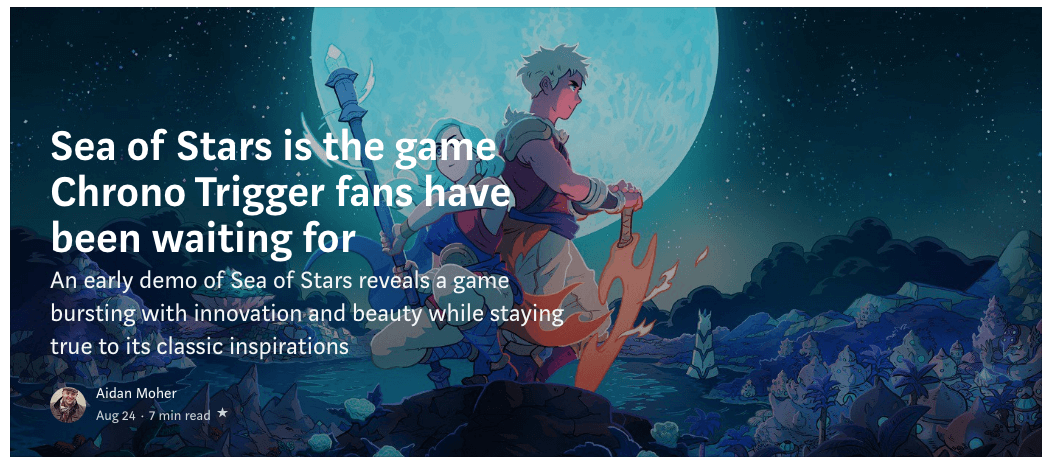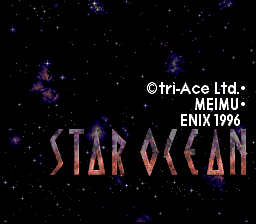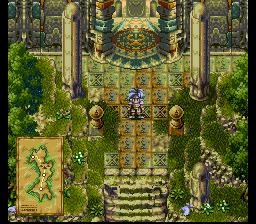Astrolabe 3: Personal journeys, the story of a writer, oceans and seas of stars, and a bunch of SFF goodies

There's no write way
No matter where you are on your personal journey, it’s so easy to look around and see others’ success as a polarized reflection of your own failure. We all face setbacks and triumphs, successes, doldrums, and doubts, but—especially in a world where social media dominates—we often see only the highlights from other lives and careers. Nobody posts photos on Instagram of all the hard stuff, making it feel like you’re the only one struggling, and everyone else is just skating through their journey toward the success you dream of every day.
A couple of weeks ago, I asked a question on Twitter:
Informal poll time!
— Aidan Moher (@adribbleofink) 4:55 AM ∙ Aug 14, 2020
Professional writers: Did you go to school for writing? Do you primarily write fiction or non-fiction?
As I expected, there was no monolithic response, no singular shared narrative that led to each of these writers finding their success in the field.
Instead, I got responses like this from Laura Lam—who studied and now teaches creative writing:
Yup. Undergrad, masters, and I teach on a creative writing MA. I'll be the first to say you don't have to go that route though. Lots of reading and writing and self reflecting on the craft will get you there too.
— Laura (El) Lam✨GOLDILOCKS✨ & ✨SEVEN DEVILS✨ (@LR_Lam) 9:44 AM ∙ Aug 14, 2020
I write mostly fiction.
And these from Delilah S. Dawson and Charlie Stross—who completed degrees, but in unrelated fields:
Art degree. Didn't actually enjoy any of the writing I was required to do for college, although I wrote a ton of maudlin poetry. Now I write fiction.
— Delilah S. Dawson (@DelilahSDawson) 12:51 PM ∙ Aug 14, 2020
Full-time novelist for 20 years here, with an additional 5 years as a full-time technical author before that (and 10 years part-time freelance tech journalism overlapping).
— Charlie Stross (@cstross) 10:09 AM ∙ Aug 14, 2020
Studied English to ‘O’ level (predecessor of GCSEs, age 16). Two STEM degrees, no post-16 arts education.
And yet more journeys from writers like Yudhanjaya Wijeratne and C.L. Polk—who never finished high school en route to becoming novelists, researchers, and policy writers.
@adribbleofink School for writing: no. Dropped out of high school towards the end, although I (much later) did take courses on English, Greek and Russian literature via Coursera.
— Yudhanjaya Wijeratne 👾 (@yudhanjaya) 5:55 AM ∙ Aug 14, 2020
Primary: both. Novels, short stories, research papers and policy briefs.
@adribbleofink i am a novelist.
— C.L. Polk (@clpolk) 10:12 AM ∙ Aug 14, 2020
i never finished high school.
The responses to my call were overwhelming, and for literally every reply, I found a different story. The point is, there’s no correct path to becoming a writer. Talking to a singular author and trying to replicate their steps to becoming a professional writer is a lesson in Survivorship 101. What worked for them is unique to their journey, and doesn’t necessarily apply to others trying to follow their path. Talk to 150 writers, however, and what emerges isn’t a pattern, but an illustration of the breadth and diversity of all our journeys.
Your path to becoming a writer is unique. It’s never happened before—even if there are millions of other writers out there—because you’ve never done it. And because it’s a brand new adventure, there’s no walkthrough. Handbooks can give you general advice before you set out, and other adventurers you meet along the way can have helpful advice, but in the end, your journey is yours alone, and there’s no wrong way to get to your destination.
At its core, writing is about our journeys as individuals. That’s what makes our art unique and worthwhile. But no journey happens if you don’t put one foot in front of the other. Again and again and again.
So, get out there and write.
Out & About
(Out & About is where I highlight my work around the web—some recent and some old favourites.)

“Sea of Stars is the game Chrono Trigger fans have been waiting for” is my preview of Sea of Stars, an upcoming turn-based RPG from Sabotage Studio in Quebec, Canada. Sea of Stars is a throwback to golden age Japanese RPGs like Chrono Trigger and Illusion of Gaia, and does a remarkable job of modernizing the feeling of playing a Japanese RPG on the Super Nintendo.
Retro games are hot right now, and we’ve seen many games, including Sabotage Studio’s own take on Ninja Gaiden, The Messenger, looking back to the golden age of gaming as they attempt to revitalize old classics with a modern coat of paint. Based on my time with the demo, I feel confident saying that few games manage to pull off this tricky balance as well as Sea of Stars.
I spoke with Boulanger about his inspirations and the team’s work on the game, and a passion for golden age Japanese RPGs from the Super Nintendo and PlayStation was clear. Citing the game’s western origins, Boulanger hesitated in calling Sea of Stars a “Japanese RPG,” instead telling me they’re billing it as a Turn-based RPG — but the influences of Chrono Trigger, Illusion of Gaia, and even games like Castlevania: Symphony of the Night, are clear.
As a huge Chrono Trigger fan, the Sea of Stars demo pushed all the right buttons, and my anticipation for the full release in 2022 went from atmospheric to interstellar.
Read “Sea of Stars looks is the game Chrono Trigger fans have been waiting for” on Insert Cartridge
In addition to this piece, I also streamed my time playing the demo on Twitch, so you can get the full experience, and also hear more insight from my chat with Thierry Boulanger.
Some more:
- Fantasy’s Finest: An Appreciation of Daniel Abraham’s The Long Price Quartet (Barnes & Noble SFF Blog)
- Where are all the idyllic Lord of the Rings games? (Insert Cartridge)
LTTP—Star Ocean (Super Nintendo, 1996)
( LTTP stands for “Late to the Party” and is a regular column where I let Twitter decide which retro game I’ll play for an hour. Do your worst, Twitter!)
Tri-Ace’s 1996 action-based Japanese RPG Star Ocean squeaked out a victory in this issue’s LTTP poll over Treasure of the Rudras and Bahamut Lagoon, two other fabled Super Nintendo games that were never officially released in North America until fans took it upon themselves to create localizations.

Immediately, I was wowed by the graphics. Star Ocean looks like a mid-cycle PlayStation RPG and could easily sit alongside games like Wild Arms, Tales of Destiny, or Breath of Fire III without anyone batting an eye. And this extends to the game’s impressive audioscape, too. The soundtrack from Motoi Sakuraba—who’s composed for a ton of games, including Valkyrie Profile, Baten Kaitos, and Dark Souls—is everything you want from a 16-bit Japanese RPG, and there’s even voice acting in the game’s opening cinematic! Developer tri-Ace was obviously at the top of their game and really determined to push the Super Nintendo to its limits. On a system with a lot of gorgeous games, Star Ocean stands above all but a few.

It features traditional random encounters, but the battle system is a lot different from those found in a lot of Japanese RPGs of the time, mixing Tales of Phantasia’s action-based battles with an overhead perspective where positioning matters. The battle system is fast paced and hectic—but early on I felt like I had little sense of how I could control the flow of combat, especially with my limited skill set. It’s messy, especially against some of the refined battle systems in contemporaries like Chrono Trigger or Final Fantasy V, but it overcomes that by being especially unique for its time.
The story itself starts off as familiar fare, but the overt mixture of science fiction elements in a fantasy world felt very ‘90s to me, complete with a fairly on-the-nose Star Trek: The Next Generation reference, and feels like it would appeal to Phantasy Star fans. I started my play session in a bog standard fantasy town beset by bandits, and ended, 45 minutes later, aboard a space vessel in the hands of two interstellar researchers hunting for a cure to a disease caused by a bio weapon. In a lot of ways—not just its graphical prowess—Star Ocean feels more at home alongside PlayStation Japanese RPGs like Xenogears than its Super Nintendo contemporaries.
As an added bonus, I streamed my LTTP play through of Star Ocean—in case you want to see it in all its glory. I’ll be trying to regularly stream my LTTP play throughs, so give it a watch and let me know what you’d like to see from the streams.
Star Ocean was initially released in Japan for the Super Nintendo in 1996, but did not receive a western release—official or unofficial—until Dejap’s fan translation in 2003. It was subsequently remade for the PSP as Star Ocean: First Departure in 2007, and released again on Switch and PlayStation 4 in 2019 as Star Ocean: First Departure R.
Recommended Reads
Memory, Sorrow, and Thorn by Tad Williams
This is the perfect epic fantasy trilogy. It’s often criticized for its achingly slow and meandering start, but, like Tolkien’s Lord of the Rings, Williams puts in a lot of work making the reader care about the world before the quest begins and the payoff is huge. It’s a sprawling, melancholy epic that deconstructs its genre with peerless precision. I’ve got a lot of good things to say about it on the Barnes & Noble SFF Blog (RIP).
Quest Markers
(Quest Markers is a collection of the coolest stuff I’ve seen around the web lately.)
- Suikoden I is the Best Suikoden (Insert Cartridge)
- How The New Host Of ‘Blue’s Clues’ Joshua Dela Cruz Is Changing The Face Of Children’s Television (Forbes)
- The African Superhero and the Legacy of Captain Africa (Tor.com)
- YouTube: Project Athia - The History of Luminous Productions (Easy Allies)
- Will I Live to See My Utopia? by P. Djèlí Clark (Uncanny Magazine)
- YouTube: Metal Gear Solid V is a Misunderstood Anti-War Masterpiece (Michael Saba)
- India's rare first graphic novel is being reprinted (Input)
- Twitter: Josh Sawyer on Pillars of Eternity and why Steam achievement rates don’t indicate sequel failure
End Step
Thanks for joining me again this issue! I hope you’re finding your way on whatever journey you’re pursuing. I always love to hear from my readers, so if you have any feedback, or just want to chat, come find me on Twitter!
Support
There are lots of ways to support Astrolabe and my other work. Check ‘em out!
- Patreon: http://patreon.com/adribbleofink
- Ko-fi: http://ko-fi.com/aidanmoher
- Paypal: http://paypal.me/AidanMoher
Credits
Astrolabe banner photo by Shot by Cerqueira on Unsplash

